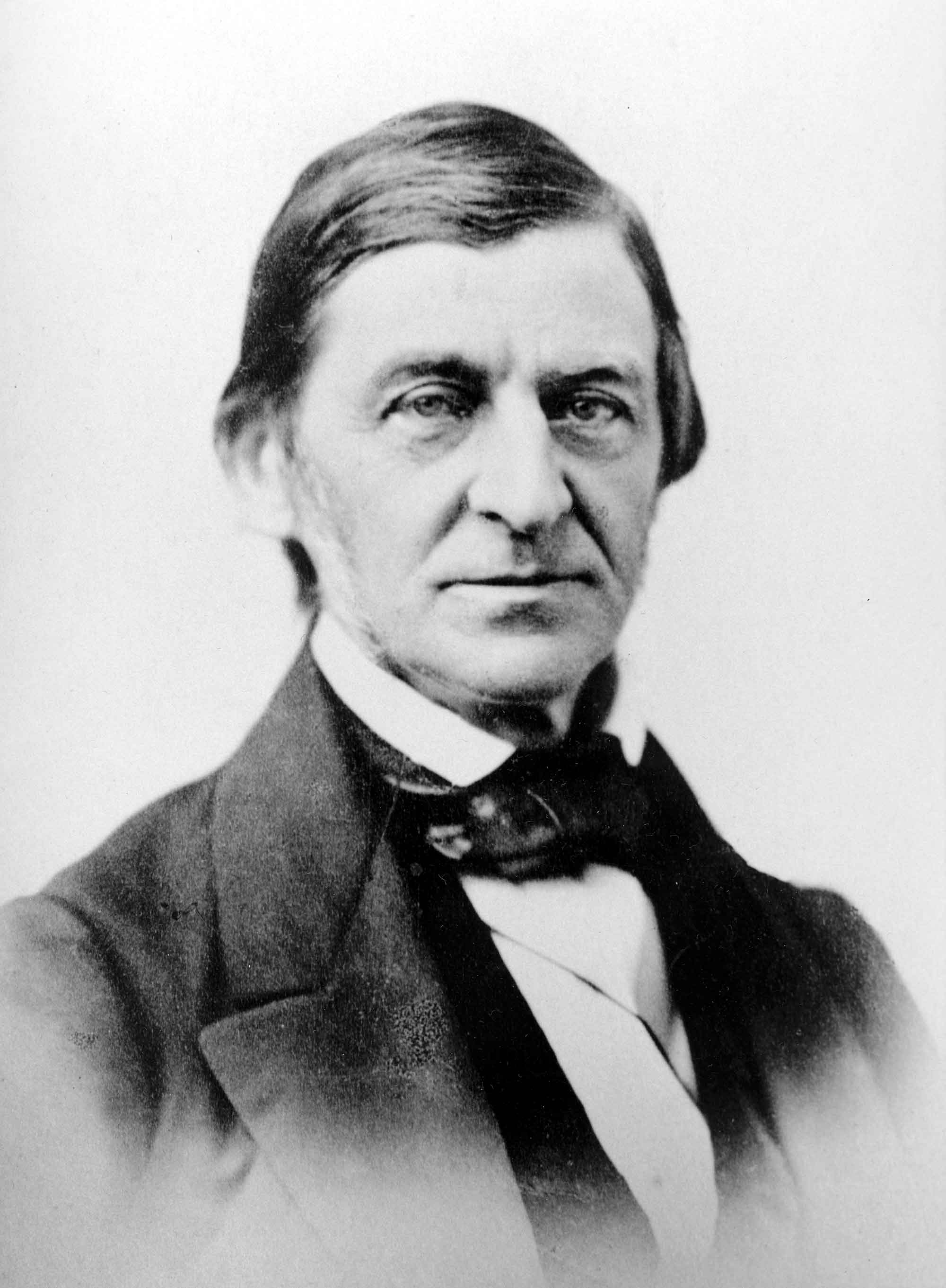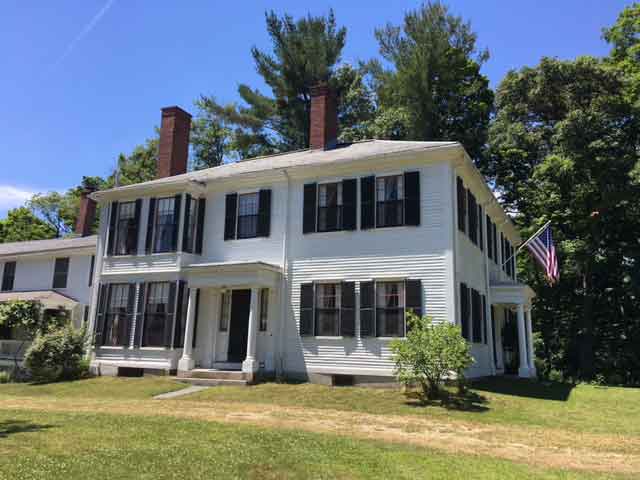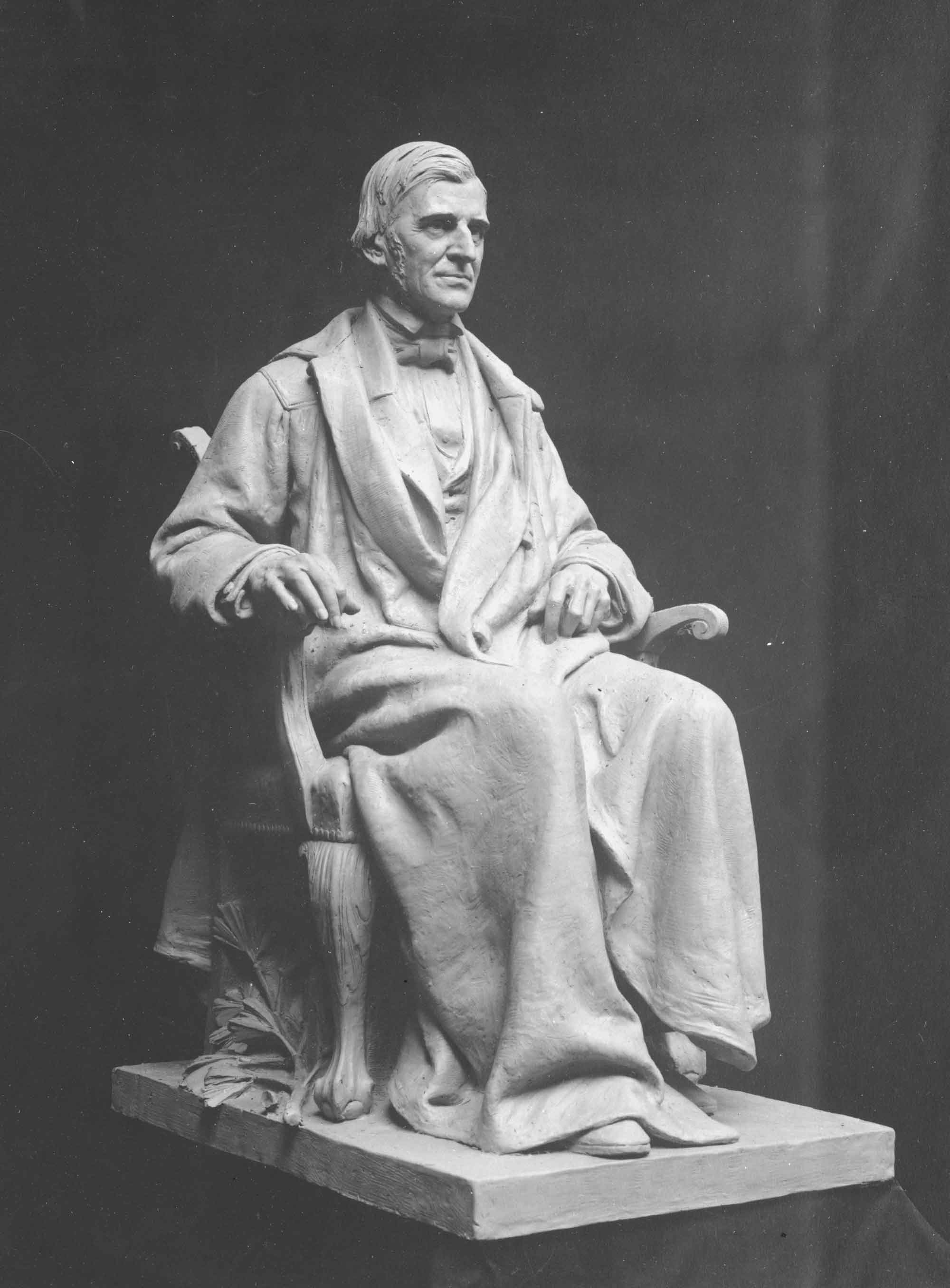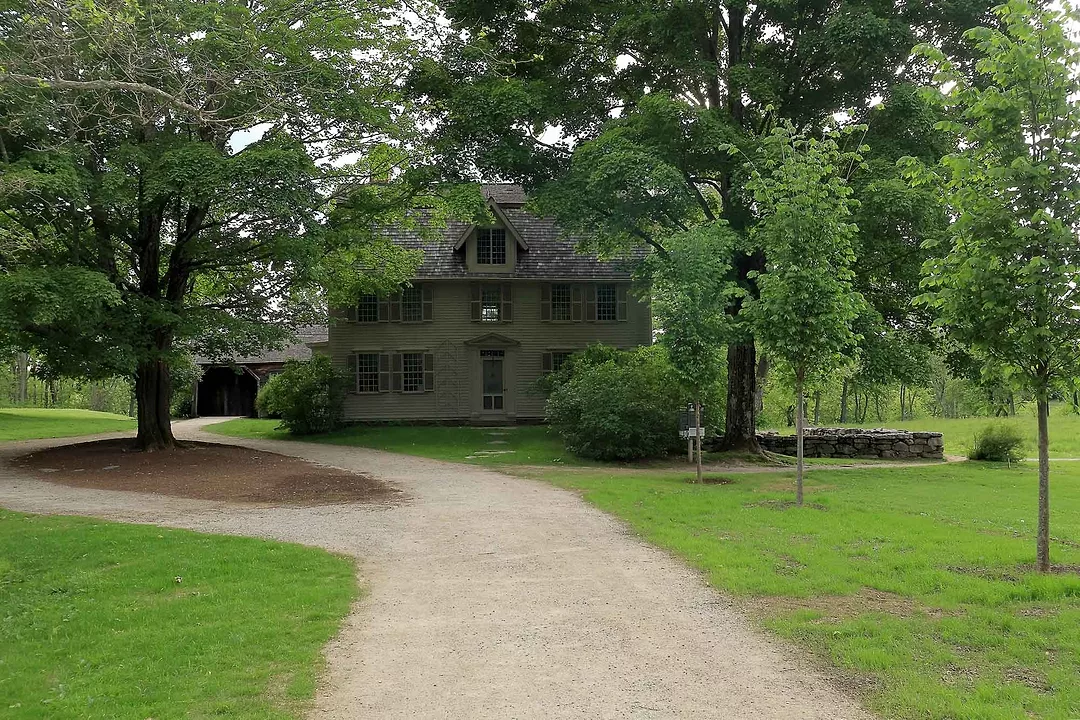Ralph Waldo Emerson lived in Concord for most of his life and probably explored almost every inch of it on foot. As he once said, “I go through Concord as through a park.” Today, we can follow in the footsteps of the “Sage of Concord.”
The Old Manse
269 Monument Street
The house (a parsonage) was built by Emerson’s grandfather, William Emerson. As a child, Ralph Waldo Emerson visited the house periodically, and in November 1814, when he was eleven years old, he moved to the house with his mother and siblings as guests of Reverend Ezra Ripley of the First Parish Church, his step-grandfather. While staying there, Emerson attended school in Concord for six months. In 1834, after resigning his pastorship in Boston and returning from his first trip to Europe, Emerson once again boarded in The Old Manse with Ripley and family members from 1834-1835. Looking out of the window in the upstairs study where he wrote his first book, Nature, you can enjoy the same view of the North Bridge that Emerson would have seen as he worked. thetrustees.org/place/the-old-manse

Ralph Waldo Emerson
| Courtesy Concord Free Public LibraryBush (Ralph Waldo Emerson House)
18 Cambridge Turnpike
Emerson purchased the house where he lived for the remainder of his life in July 1835. He named it “Bush” and, the following September, brought home his second wife, Lidian. In his journal, he hailed his new residency in Concord as a return to the “quiet fields of my fathers.” Emerson did most of his writing in his study in the northwest corner of the house, promising himself shortly after moving in “not to utter any speech, poem or book that is not entirely & peculiarly my own.” Bush was host to many famous guests, including John Brown, Margaret Fuller, Daniel Webster, and Walt Whitman. The Transcendental Club also met there on occasion. The house was severely damaged by a fire in July of 1872, but Emerson’s neighbors saved his books and papers, and his friends took up a collection that more than paid for the repairs. Today, the house still contains furniture, artworks, and books from Emerson’s time. Emerson passed away in the house in 1882. ralphwaldoemersonhouse.org

Ralph Waldo Emerson House
| ©Barbara EwenGoose Pond
Walden Pond Reservation
Goose Pond lies northeast of the parking lot for Walden Pond. On October 15, 1836, Emerson walked out to Goose Pond where, “amid the many coloured trees,” he said, “I thought what principles I might lay down as the foundations of this Course of Lectures I shall read to my fellow citizens.” At the pond that day, he came up with eight basic propositions (the “Goose Pond Principles”), one of which he used to begin his essay “History:” “There is one Mind common to all individual men.” Today, the Pine Hill and Goose Pond Trail runs along the west and north shores of the pond, and you can walk out on the peninsula to the center of the pond, as Emerson surely did during his visit. walden.org/property/goose-pond
Emerson-Thoreau Amble
Emerson’s walk to Goose Pond doubtless began on the Amble, which starts behind the Emerson House and ends at the site of Thoreau’s cabin at Walden Pond. The path follows the approximate route that Emerson would have normally used to walk to Walden, passing the lovely Fairyland Pond in the Concord Town Forest on the way. Emerson regularly walked to Walden with his children on Sunday afternoons. visitconcord.org/visit/walking-tours/emerson-thoreau-amble
Walden Pond Reservation
The Amble was likely well-used by Emerson because, as he confessed in a letter to his friend Thomas Carlyle, he “had a sort of daily occupancy” in the land by the pond. So, in the fall of 1844, he purchased a pasture and neighboring pine-grove wood lot on the north shore. He told Carlyle that he might build a cabin on the property where he could spend the night, but he quickly assigned that privilege to Thoreau, who built his cabin there the following summer. mass.gov/locations/walden-pond-state-reservation
The Cliff
Emerson also acquired the heights across Walden Pond, a total of forty acres that came to be known as “Emerson’s Cliff.” The Cliff offered a good view of the Pond as well as Mount Monadnock and was a favorite spot for Emerson to hold outdoor parties. Emerson’s heirs donated the Cliff and Emerson’s other land at Walden to the Commonwealth of Massachusetts for the Walden Pond Reservation in 1922.
walden.org/property/emersons-cliff
Concord Free Public Library Emerson gave an address at its opening in 1873 and served on the Library Committee until his death. Don’t miss Daniel Chester French’s statue of Emerson, created posthumously, in the lobby, which calls to mind his later statue of Lincoln at the Lincoln Memorial in Washington.concordlibrary.org

Statue of Emerson by Daniel Chester French
| Courtesy Concord Free Public LibrarySleepy Hollow Cemetery
On September 29, 1855, Emerson gave the opening address at the dedication of Sleepy Hollow Cemetery. Emerson was the first chairman of the Concord Cemetery Committee and attended many funerals there. He spoke at length at the funeral of Thoreau (originally buried in the New Burying Ground, now part of Sleepy Hollow) and served as a pallbearer at the funeral of Nathaniel Hawthorne on Authors Ridge. Authors Ridge offers a beautiful walk through one of the country’s most distinguished small cemetery areas, our equivalent to the Poets’ Corner at Westminster Abbey. Emerson himself was buried there in a white robe donated by Daniel Chester French. Later, after much deliberation, the Emerson family chose to adorn his grave with a large uncarved and seemingly indestructible boulder of rose quartz. concordma.gov/1956/Sleepy-Hollow-Cemetery
Other sites
Emerson walked everywhere in Concord. In an 1854 journal entry, for example, he talks of his “delicious summer stroll through the pastures of Barrett, Buttrick and Estabrook farms” with Ellery Channing. He boated on the rivers and skated on them in the winter. Emerson also attended First Parish Church, participated in numerous gatherings (such as John Brown’s lecture at the Town House), and spoke at the Concord Lyceum and many Concord events.
Turn to Historic Concord: Plan Your Visit on p. 70 for opening hours and more information on many of these sites


